best mix for potting rose?
potted roses best mix for potted roses / potting mix or soil sand and potting mix? can do either or both
Comments (31)
Jeannie Cochell
11 years agolast modified: 9 years agoI usually just pick up a bag of Rose Planting Mix. Some folks use a combination of garden clay, compost and cactus mix (light on the clay, heavy on the compost). Some other rosarians use Miracle Grow potting mix. What kind of native soil do you have in your area?
zaphod42
11 years agolast modified: 9 years agoI am also interested in what I should do for potting mix. I found this recipe and am leaning towards this.
POTTING MIX FOR ROSES
2 parts potting soil mix
1 part well-composted manure
½ part good compost
½ part peat moss
1 part perlite
1 cup alfalfa meal and ½ cup bone meal for every 5 gallons of soil, or according to package directions.Does it have all the right components? Will I still need to layer packing peanuts on the bottom of the pot with this blend or will I get decent enough drainage?
Related Professionals
Reading Landscape Architects & Landscape Designers · Manorville Landscape Architects & Landscape Designers · Roosevelt Landscape Architects & Landscape Designers · Centereach Landscape Contractors · East Chicago Landscape Contractors · East Haven Landscape Contractors · Fort Payne Landscape Contractors · Mashpee Landscape Contractors · Morrisville Landscape Contractors · North Highlands Landscape Contractors · Pleasant Prairie Landscape Contractors · Ponte Vedra Beach Landscape Contractors · Rockland Landscape Contractors · West Allis Landscape Contractors · Four Corners Landscape Contractorsmichaelg
11 years agolast modified: 9 years agoMiracle-Gro Orchid Soil makes a good base because it consists of bark fines and peat, which are the most durable organic materials. Mixes containing a lot of compost will soon break down into very fine-textured muck which doesn't drain properly. Up to 25% perlite is a good additive for big pots because it greatly reduces weight. 11% clay in the form of plain cat litter has been shown in a trial to reduce the need for water and phosphate. However, it increases weight.
Do standardize your potting mix and use the same soil when you move a plant to a larger pot. If there are zones of lighter and heavier soil, it's impossible to maintain even moisture.
seil zone 6b MI
11 years agolast modified: 9 years agoI just use a good quality bagged potting soil. Nothing fancy.
AquaEyes 7a NJ
11 years agolast modified: 9 years agoI think the best answer has to factor in how long you plan to keep the rose in a pot (are you just growing-on a band to eventually go into the ground, or are you planning to keep the rose in a pot indefinitely?), your climate (regarding water loss, length of growing season, whether the plant will go dormant outside or not, etc), and -- if you plan to put it in the ground -- what your native soil conditions are like (in this case, the potting mix should compensate for what your native soil lacks).
When I was in Buffalo, I potted bands for eventual placement in the garden. The soil up there had a lot of clay, and some of the roses I got would go into a "block garden" at the end of my street, while others would become gifts to be planted in more maintained gardens.
For the roses at the end of my street (Gallicas and Albas), I wanted to compensate for the heavy clay and also give a head-start on nutrients and organic matter. For those roses, I made a mix of (if I remember correctly...) 2 parts peat, 2 parts Peters' topsoil, 1 part composted cow manure, 1 part cedar mulch, with 1 cup Rosetone and 1/2 cup Epsom salts mixed into each 5gal container. The bands grew in their pots for a few months, and then were planted into the ground by simply digging a hole big enough to fit the entire soil-ball and plopping them in. They grew great with little further attention -- they were watered only a handful of times that first summer, and not at all the following year.
The bands given as gifts got a slightly different mix. If I remember correctly, the mix was 2 parts peat, 1 part Peters' topsoil, 1 part composted cow manure. Into each 2gal pot I mixed 1/2 cup Knock-out organic rose food (chosen simply because it was on sale at the time and Rosetone wasn't) and 1/4 cup Epsom salts. These were also grown on for a couple of months before they were given as gifts. Some were planted right away, others not until Autumn. I'll be hearing about how they got through the winter in the next few weeks.
Six roses from the "farewell gifts" batch of bands came with me to NJ and are just waking up on my porch, where they got through the winter just fine without any additional protection (I'm in zone 7). They were in the same potting mix as the others given as gifts. Before they went to sleep, they easily tripled in size. I've posted pics of them on the Antique forum in the linked post below. They, too, will be going into the ground, but not until after the peak-heat of Summer passes.
If I was planning to keep the roses in pots longer, I'd make a lighter mix, going back to adding the cedar mulch and reducing the topsoil component. Without worms working through the soil, the mixes I made would start to compact over time in the pots. The cedar mulch is big and bulky, but lightweight. It would take a while to break down in the pots, thus allowing for drainage and air-space within the mix. I'd probably add some perlite and/or vermiculite as well.
I didn't go by a stated recipe when I made the mixes. Basically, I had an idea in my mind of what I wanted the soil to feel like in my hands, and bought the ingredients I thought I needed to get it to that point. I started with one part of each component in a wheelbarrow and added more of some until I got the consistency I wanted, then remembered how many parts of each went into that ratio. I then repeated that ratio every time I filled the wheelbarrow, using its contents to fill the pots.
:-)
~Christopher
Here is a link that might be useful: Feeding bands and 1 gal in summer
susan4952
11 years agolast modified: 9 years agoMichael, do u use pure orchid mix or cut it with anything?
kittymoonbeam
11 years agolast modified: 9 years agoThis is part 2, sorry about the parts but I can only copy in sections
Developing Laguna Hills Nursery Potting Soils
I can't take all the credit for developing our superior potting soils. I was initially mentored by a local freelance research scientist, Dr. Steel Morris. His mind was definitely not molded by what the professional horticulturalists were preaching.
It was the early 1990's and I was pretty frustrated. Our customers were having trouble keeping plants they purchased from us alive and what we (professionals) were taught was not helping them. Keeping our displays of container-grown plants properly watered was getting so detailed (different schedule for different plants and for different growers of the same plant) that there was just no chance that any amateur would be able to succeed. I could have written an entire book just on how to properly water our display of citrus trees. At the time I didn't know what was wrong or what to do to make caring for plants easier.
What was (and is still) being preached to the industry is that the more organic matter (in the form of compost) you mix into the soil, the better the results. We were told that compost will remedy all problems.
At the time I was growing papaya plants for our customers in 1-gallon containers in SuperSoil Potting Soil. I used that brand because, at that time, it was promoted as being the best. If I remember correctly, SuperSoil at that time was a blend of composted bark, peat moss and sand (I know that the formula has changed over the years). What I soon found out was that if I watered the baby papaya plants on consecutive days they would always turn yellow, wilt and fall over; the roots rotting very quickly. I would have to withhold watering until the soil was totally dry.
Dr. Morris came by and challenged me to allow him to show me what material worked better in pots. If he had come by 10 years before, I would have dismissed his claims, but my frustrations at that time kept me interested.
He asked me to bring along what I considered the most difficult plant to grow, so of course, I brought out one of my papaya plants. He explained to me how to carefully remove the potting soil from the roots and told me to keep observing the plant as I was doing it. He did not tell me what I should expect.
kittymoonbeam
11 years agolast modified: 9 years agopart 3
After about 15 minutes (I was being very careful, not really having ever tried to remove soil from a growing plant before) I noticed that the leaf stalks holding the large leaves had moved from a horizontal position to a definite upright position. The papaya plant simply looked much happier! Removing the potting soil was like removing a straightjacket.
He then showed me what type of soil he preferred growing plants in. He was using a type of pumice rock, a highly porous rock of volcanic origin. We placed the papaya plant in a very large container filled with pumice. I could now irrigate once every 3 days or every 2 days, every day, or even twice a day; with no ill effects. The papaya plant grew 6' tall within a few years and was loaded with fruit.
Dr. Morris told me that organic ingredients seem to always cause trouble with plant roots. This is totally opposite what we were being taught.
So I started my own experiments. I grew a variety of plants in containers with different mediums (scientific term for the material used as potting soil). I used pumice in one container, sand in another and a popular organic potting soil in a third. I used a weekly dose of water soluble fertilizer in each. No matter what plants I grew the results were the same. Organic potting soil gave the poorest results by a huge margin.
I knew I was on the right track, but pumice was drying out too quickly, requiring irrigation more than once per day. Sand was just too heavy to promote.
A different soil scientist I had an opportunity to talk to told me that peat moss was an important ingredient in potting soils in that it stores and releases water better than any other material known and lasts 5 years (coir was second best). Even though peat moss is organic it does decompose at a much slower rate than most organic materials and doesn't leach out toxic tannins like many wood and bark products. Peat moss also happens to be a very lightweight material.
Sand weighs about 100+ pounds per cubic foot. Crushed pumice (gravel size pieces) weighs about 1/3 as much as has far superior permeability (airflow).
kittymoonbeam
11 years agolast modified: 9 years agopart 4
I decided to mix together 2 opposites, pumice & peat moss, and see how plants performed in it. With a 50:50 mixture I couldn't find anything wrong. Plants looked great, grew rapidly, with no symptoms of over watering. Plants even looked good sitting in several inches of water for months at a time. This became our ACID MIX POTTING SOIL. The pH is about 6 or a bit under.
After a year, however, I did notice the soil level dropped about 10%-15%. Peat moss looses some of it fibrous texture and takes up less space. I noticed that when we lowered the percentage of peat moss to 30% there was no significant loss of soil volume after one year. I then added as much sand as the bagging company would allow (10%). The plastic bags and the pallets, holding 70 bags each, could not handle any more weight. (One delivery truck broke their lift gate platform trying to lift a pallet of our potting soil.) This mixture (60% pumice, 10% sand, 30% peat moss) became our TROPICAL POTTING SOIL. For permanent applications this is the best bagged potting soil that you can buy.
kittymoonbeam
11 years agolast modified: 9 years agoAgain, I am not trying to sell Gary's products, but I think his ideas make a lot of sense. It's a good place to start on your own adventures.
Here's the final part-
I tell my customers that the soil I grow our nursery plants in is roughly 2/3 ACID MIX * with the rest being sand (washed plaster sand, play sand, masonry sand). This would make the analysis 33% peat moss, 33% pumice and 33% sand. Too heavy to sell in a bag, but an excellent all-purpose potting mix.
Laguna Hills Nursery PLANTER MIX
Although intended to amend heavy soil, this product is very similar to our potting soils. It is 70% pumice and 30% peat moss. The pumice helps to aerate clay soils, while the peat moss helps to acidify our naturally alkaline conditions. However, it is still an excellent potting soil for plants that don't need high moisture retention. This is what I grow pineapple plants with. It's the best for sensitive indoor plants like Ming Aralia, Dracaena and Cordyline.OTHER NOTES:
Pumice and peat moss are sterile materials (nothing has recently lived in them). Sand is not considered sterile. This is actually only important when propagating plants. Therefore when starting seeds or cuttings I'll use our ACID MIX or our PLANTER MIX.All of our ingredients are natural and "organic" in that sense. We didn't have our products certified because of the expense. Having an organic label wouldn't make it a better product.
Also note that our soils do not contain fertilizer. We recommend that you add a good fertilizer just after planting and follow the instructions on the product. It is best to use an organic source of fertilizer at least once in a while to keep the soil healthy. Be careful with indoor potted plants, however. Organic fertilizers applied indoors may cause insect infestations or odors.
Our soils don't contain fertilizer, as it won't store well in a bag of moist potting soil. Potting soils that do contain fertilizer have to be stored in a very dry state or else the fertilizers can change to a toxic state.
* Gary's acid mix is peat moss and pumice. He adds in more pumice for the planters mix. That's what I like to start out with and then I add sand, some of my own sifted soil which is clay based and any fertilizers or composted manures. Mostly I am putting the fast breaking down organics on top like in real soil.
I have tried both methods now and I am liking the more permanent nature of this method. Roses are more forgiving than some other plants but I have seen roses decline in a year when inferior potting soils start to turn to muck.
michaelg
11 years agolast modified: 9 years agoThe material that kittymoonbeam has pasted in is very solid advice. I don't know whether gardeners can get access to pumice, but you could see if the local concrete plant will sell you some.
Another material that would serve the same purpose well is fired, expanded clay. It is used as a lightweight concrete aggregate and to dry wet spots on baseball fields. It has a better soil chemistry than expanded shale or expanded slate, although these also can be used in potting mixes. You might find one of these expanded mineral materials sold in modest quantities as "soil" for aquariums and water gardens.
AquaEyes 7a NJ
11 years agolast modified: 9 years agoKittymoonbeam, thank you for sharing that wonderful information. I will definitely keep that in mind when I start adding permanent pot-plants to my garden and home. I do plan on trying some tropical fruiting plants after I get the bulk of these potted-up bands into the garden, and those soil mixes sound as though they'd be great for that.
However, I think I'm going to stick with what has been working for me when it comes to potting-up bands which will go into the garden in a year. I realize that what I mix isn't ideal for longer-term pot-life, but it's working well thus far for temporary growth in a pot, later to become a much-needed soil amendment at planting time for where I'm located (lots of clay). While all that organic matter will lead to a compaction problem for a permanently-potted plant, it will become food for the soil critters which will keep things aerated with their subterranean tunnels when I pop the growing-on bands into the ground.
When my intended "pot-pet" collection of fragrant dark-red or crimson Hybrid Teas are ready to move from grow-on to permanent pots, I'm definitely going to put together a mix like Gary's description. Thanks again!
:-)
~Christopher
kittymoonbeam
11 years agolast modified: 9 years agoI still get the bagged mix for short term use and use my own recipe for long term use. I was wondering if using a wick of some sort through the drainage hole would solve the perched water situation. It sounds crazy, but I did try potting in 80% sand and it works great but oh the watering! The sandy soil I like best is riverbed soil but then I have to drag it up the hill.
susan4952
11 years agolast modified: 9 years agoActually the container forum writes about using strands of clothesline as a wick. The nylon lasts longer than the hemp.
michaelg
11 years agolast modified: 9 years agoSusan, yes, Turface is one brand of expanded clay. It comes in different particle sizes, but I think you would want something around 1/8". This material is fired at a higher temperature than kitty litter so it does not break down. It is said to hold lots of water and nutrients while allowing aereation in the spaces between particles/
To experience the "perched water table" or saturated zone at the bottom of every pot, water a small or medium sized pot very thoroughly and allow 20 minutes for absorption and drainage. Then pick up the pot, stick your finger in the drainage hole, and hold it there. This breaks the surface tension and allows further drainage to occur. If the drain holes are at the edges, tip the pot at a 45 degree angle with a hole at the lowest point and touch the hole. This allows even more drainage.
The saturated zone has a certain depth that depends on the soil, not the size of the pot. A "drainage layer" in the bottom of the pot just makes things worse by raising the saturated layer higher in the pot.
With conventional organic potting soils it is best to water thoroughly at intervals and then let the surface layer dry out in between. The drying soil will wick moisture up from the saturated zone and allow aereation periodically.
Wicks in the bottom are probably effective and would allow more frequent watering.
michaelg
11 years agolast modified: 9 years agoYou can use a piece of unfinished wood like a yardstick, dowel, or (for a small pot) wooden swizzle stick as a dipstick. The part that entered the perched water table will come out wet. This will tell you how thick is the PWT for a particular soil mix, and you can observe how it shrinks as the soil dries.
michaelg
11 years agolast modified: 9 years agodeleted
This post was edited by michaelg on Sun, Mar 24, 13 at 15:50
kittymoonbeam
11 years agolast modified: 9 years agoA few years ago, before I knew anything about soils, I planted budded roses in 5 gallon pots. I liked to see the rose before I planted and then if I didn't like the color or something, it was easy to give away rather than wait for next December to dig it out and pot it. The rose roots would be down lower and up above the potting mix would get too wet so I started planting annuals to dry out the upper layer a bit. After a few months, the roses would be ready for the ground and the cool season annuals would be on the way out ( we have 2 growing seasons here cool- late fall/winter/early spring, and warm - mid spring/summer/ early fall ) This was entirely my own fault since I was planting them deeper and covering the bud union trying to get them to self root.
If I tried to keep them in 5 gal. pots the summer would stunt them. If I planted them up into 15 gal. pots, I had to replant with summer annuals to keep the top of the mix from getting too soggy. I would always notice that the volume would drop as the mix deteriorated. I had to take them back to bare roots and replant in new mix in December or else the plant would grow poorly the next year. This will be my first year trying a more permanent pumice and sand based mix for my 15 gallon pots. Hopefully, the extra weight will help the pots stay upright when the fall winds begin to blow.
My dwf. apple tree did fine last year on a sandy loam soil in a 15 gal. pot but it was so heavy that I had to tip it out in place this year for bareroot planting into the ground. I like moving my roses around when the summer heat comes on so heavier pots might be difficult to manage. I'll just try a few on sandy loam and see how it goes this year.
susan4952
11 years agolast modified: 9 years agoMichael, I got the MG orchid mix. I think I need a finer blend or I may need to add it to regular potting soil. I got the coarse blend, and it doesn't seem to be dense enough to insulate for zone 5 winters. Thoughts?
DLEverette_NC_Zone7b
7 years agoI'm super late on this, but that was a really good read on soil! I'm curious about how he was able to remove a plant without damaging the roots. My potted hot cocoa rose is suffering from having too much moisture I believe. I want to try to save it, but I want to do it without disturbing (what's left of) the root system too much.
Ohiofem 6a/5b Southwest Ohio
7 years agoI've been growing hybrid tea roses in 15 gallon containers for the past four years and have found the advice in the Gardenweb container forum very helpful. I use the 5-1-1 mix described in this very long and popular thread. That's 5 parts pine bark fines to one part sphagnum peat to one part perlite. I've never had a problem transplanting from this mix. No sand, no soil, no compost. Also no perched water table or soggy soil either. Container Soils Water Movement and Retention.
Just Started(Sydney)
7 years agoThanks Ohiofem. Just what I needed to hear. How you feed them given that Roses are heavy feeders?
Ohiofem 6a/5b Southwest Ohio
7 years agoI feed all my container plants in the same way: I include a complete controlled release fertilizer in the potting mix at the rate of 1 tablespoon per gallon of mix and then use a water soluble fertilizer when watering. The same formula works great for roses as well as tomatoes. Both fertilizers have an NPK ratio of 3-1-2 plus Calcium, Magnesium and micronutrients. I know this goes against typical advice for growing roses in the ground, but growing in containers is a completely different proposition.
Here's advice from the same source I referred to before:
http://forums2.gardenweb.com/discussions/1389454/fertilizering-containerized-plants-iv
tinmanrusted
6 years agoWhat do you guys suggest soil-wise for a) bareroots starting out in pots and b) established roses going into pots? I am on a budget, and 4 of the pots are really large (20") for a few of my more established floribundas, so I'm going to need A LOT of soil. Currently just have a couple bags of composted mulch and red cedar mulch, 1 small bag of perlite, 1 small bag of peat moss, and 1 bag of earth-gro soil (cheap, I know)..I'm in AZ btw, Zone 9B. Thanks all!! :)
ValRose PNW Wa 8a
6 years agolast modified: 6 years agoI'd go to a local nursery that sells bulk potting soil, not the same as top soil. This should be the same soil that the nursery uses in their pots, if they are growing quality plants they will use quality potting soil. Around here, a cubic yard of potting soil goes for $45. The potting soil we use for growing out plants is mainly aged pine bark, with some Florida peat, sand and is ph balanced. We don't find roses to be fussy about the potting soil as long as it drains reasonably well and once our roses are rooted they all go into a pine bark mix . We root in a Canadian peat and perlite mix.
Va Joh(zone8b)
6 years agoI use a mix of amend, compost, and either Mastery Nursery Gardeners choice or the Dr Earth one as it states it can be used for large outdoor containers. It also depends how much rain you get in winter and if you plan to keep them in pots permanently. Mine are permanent in pots. Miracle grow I have found can get quite compacted over time in my rainy zone so I have switched to the other two and every year I take out a third of the soil and add Vermonts Compost plus but you can use any compost. Here is a couple pics of my potted roses.
Those are two Joseph's coat climbing roses and are only two years old in my garden.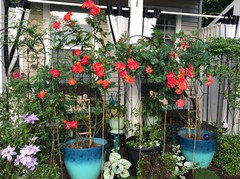 These are new this year and haven't bloomed yet as I cut both blue Girls buds off and potted them up to promote a bushier plant. Although Blue Girl doesn't have too many leaves naturally anyway. Closest to farthest is Blue for You, Blue Girl, Earth Angel, Blue Girl, and last is Heirloom.
These are new this year and haven't bloomed yet as I cut both blue Girls buds off and potted them up to promote a bushier plant. Although Blue Girl doesn't have too many leaves naturally anyway. Closest to farthest is Blue for You, Blue Girl, Earth Angel, Blue Girl, and last is Heirloom.
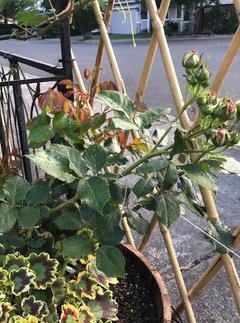
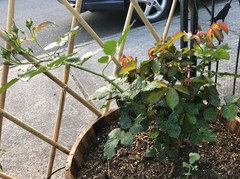
These are new eden climbing roses and I have one on either side of my archway but are training along the fence as my archway is covered with grapes and clematis.
This is Earth Angel, also new and only came with three thin canes but all that shorter growth is new canes coming out from the roots. This photo is a little old as it's gotten bigger since this photo.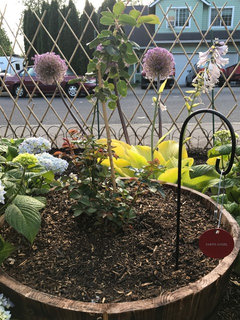
I have many more but I don't want to bombard you with too many photos.
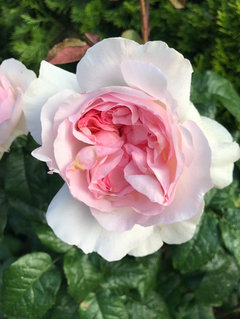
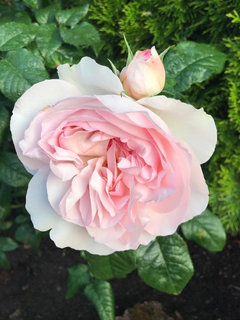
Bonus: Sharifa Asma just opening. Not potted but still pretty.
mabuswwc
6 years agoMark [S.E. Mi 6a/b],
Hi. I want to grow some roses in pots this year and was thinking of using either the Laguna Hills formulas or Al's gritty mix. If I go with the LH formula what size pumice should I use? And the peat; is that the Canadian sphagnum peat type peat or the long fibrous strandy type of peat?
Thanks,
Mark
rosecanadian
6 years agoHi Mark,
Please see these threads I started in container gardening:
https://www.houzz.com/discussions/what-about-this-blend-of-soil-for-pots-dsvw-vd~5159030
https://www.gardenweb.com/discussions/5153317/newbie-at-using-soil-less-potting-soil-roses?n=13
You can add further questions on it for your case. I don't mind at all. :)
Carol

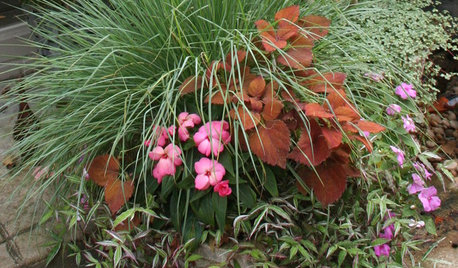
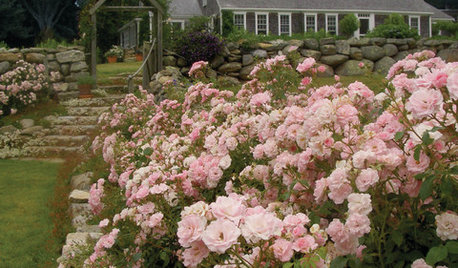






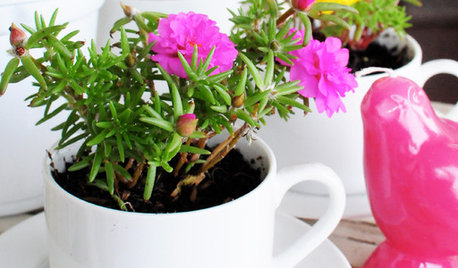






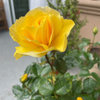

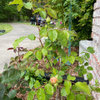
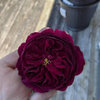
kittymoonbeam